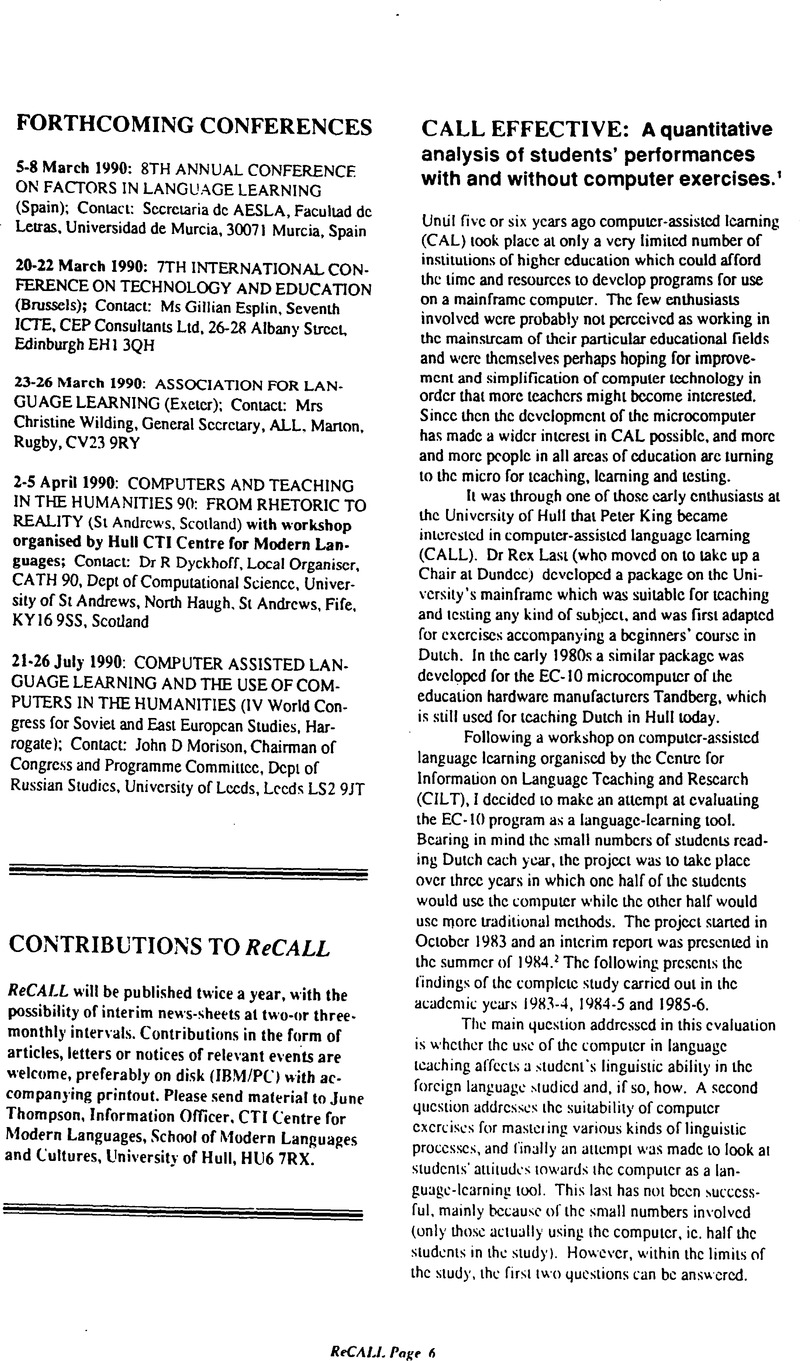No CrossRef data available.
Published online by Cambridge University Press: 16 December 2008

1. This article was first published in Wintle, M.J. (ed.): Modern Dutch Studies. Alhlonc, London, 1988 and is reprinted here with the publisher's permission.Google Scholar Thanks to Graham Rhind for valuable statistical help, to Gertrud Buschcr for sound advice and to Peter King for valuable inspiration. Any errors remaining arc of course my own responsibility.
2. First in a seminar in the Language Teaching Centre, University of Hull during the Spring Term 1984, and subsequently during the IEC/CILT CALL workshop in September 1984. The report was published in the workshop's proceedings as “Validating and evaluating CALL on the basis of the Hull program”. Report of the IEC/CILT computer-assisted language learning workshop “Learner/machine interaction in computer-assisted language learning”. held at St Martins's College Lancaster on 18th and 19th September 1984 (1985).
3. Trim, L.M. et al. , Levend Nederlands. Een audiovisuelle Cursus Nederlands voor Buitendlanders (1975). Levend Nederlands is a widely used audio-visual Dutch language course.Google Scholar
4. This was true at the time. Nowadays drills arc supervised.
5. Levend Nederlands actually consists of 24 lessons, but Lesson 1 deals exclusively with pronunciation and spelling and is therefore irrelevant as far as this study is concerned.
6. All statistical calculations in this study have been carried out according to the Mann-Whitney U-test, as defined in Butler, Christopher, Statistics in Linguistics (1985).Google Scholar This test is particularly useful for small samples, as in this study. Statistical tests of significance, such as the Mann-Whitney U-test, are used to determine whether differences between data are incidental or central to the hypothesis being tested. The significance level is expressed by p (the probability level at which an observed difference is deemed to be significant), which for each statistical test is coupled with a critical value. If the outcome of the test (z in the table of diagnostic test scores in the text and U in the separate tables) lies below this critical value, the difference between the two sets of data is not significant. This is the case in all the tests carried out in this study.